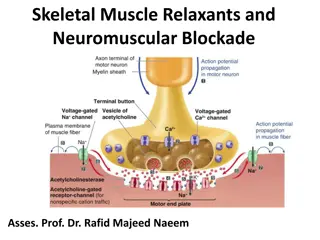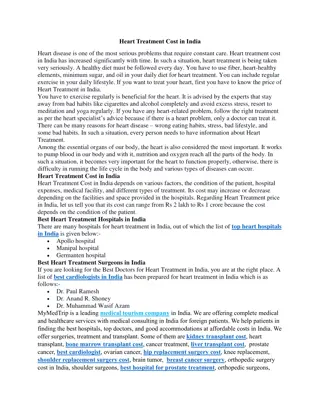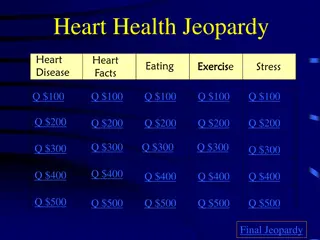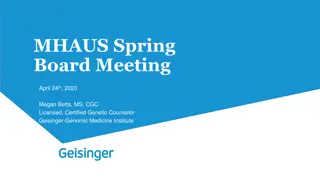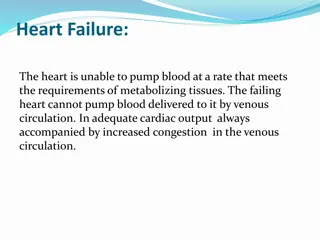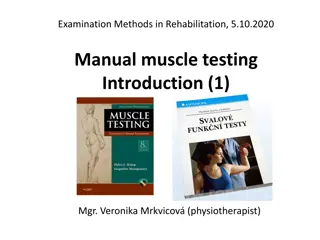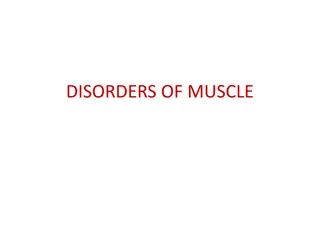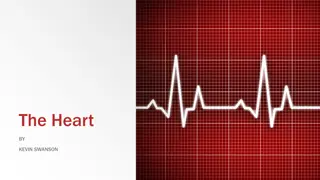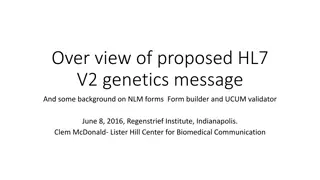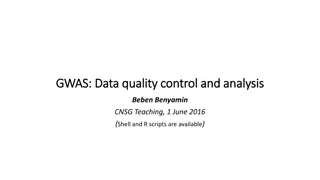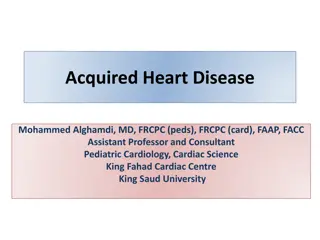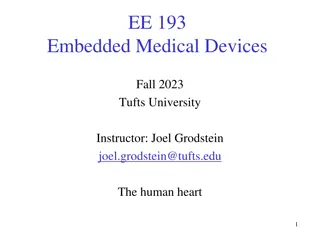Genetic Disease of Heart Muscle
Characterized by left ventricular hypertrophy, this genetic heart condition poses risks of sudden cardiac death and various clinical abnormalities. It is influenced by mutations involving sarcomere genes and can be differentiated from other myocardial disorders. The progression includes variable calcium sensitivity of myosin fibers and phenotypic development of left ventricular hypertrophy beginning in puberty. Management involves differentiating from similar conditions like Fabry Disease and Noonan Syndrome, with potential risks of progressive heart failure and atrial fibrillation.
Download Presentation

Please find below an Image/Link to download the presentation.
The content on the website is provided AS IS for your information and personal use only. It may not be sold, licensed, or shared on other websites without obtaining consent from the author.If you encounter any issues during the download, it is possible that the publisher has removed the file from their server.
You are allowed to download the files provided on this website for personal or commercial use, subject to the condition that they are used lawfully. All files are the property of their respective owners.
The content on the website is provided AS IS for your information and personal use only. It may not be sold, licensed, or shared on other websites without obtaining consent from the author.
E N D
Presentation Transcript
Genetic disease of heart muscle characterized by left ventricular hypertrophy in absence of another cardiac or systemic disease; variable morphologies Maximal LV wall thickness > 15 mm Clinical manifestations and hemodynamic abnormalities are manifold Biggest fear is sudden cardiac death in young, athletic population 2/2 ventricular fibrillation
Genetically Determined (60 70%) Autosomal Dominant, variable expressivity, high degree of penetrance Mutations involve of one of several sarcomere genes 11+ causative genes with 1400+ mutations have been reported
Fabry Disease (alpha-galactosidase A deficiency, lysosomal storage disorder) Noonan Syndrome (AD, facial dysmorphism) Mitochondrial disease Multiple other myocardial storage disorders Important to differentiate because progression and management are vastly different
Hypertensive Heart Disease Athlete s Heart Can usually be distinguished by family history, LV cavity dimension, diastolic function, and pattern of LV hypertrophy
Variable calcium sensitivity of myosin fibers Variability from fiber to fiber generates force imbalances This yields contractile dysfunction, disarray within the myocardium, and disordered cardiac remodeling
Phenotypic development of left ventricular hypertrophy begins in puberty Wall thickness development is usually complete by adulthood ie: In most cases, not a progressive disease Can be compatible with normal longevity Portion of patients are at risk for disease- related complications Progressive heart failure symptoms with systolic dysfunction Atrial fibrillation with thromboembolic stroke risk
Quintessential Phenotype of HCM 0.2 % or 1:500 in general population worldwide At least 600,000 people affected in United States
LV Outflow Obstruction Diastolic Dysfunction Myocardial Ischemia Mitral Regurgitation
Heart Failure Chest Pain Arrhythmia Increased incidence of supraventricular and ventricular arrhythmias Hence, increased risk for SCD
Fatigue Dyspnea Chest Pain Palpitations Presyncope/syncope INDEX OF SUSPICION MUST BE HIGH IN YOUNG ATHLETE WITH THESE SYMPTOMS
Echocardiography Cardiac MR is indicated if echo is inconclusive for diagnosis Unexplained LVH, often asymmetric Genetic testing is becoming more available to identify those that carry disease-causing mutation in absence of LVH
12-lead EKG 24 Hour Ambulatory (Holter) EKG is recommended in initial evaluation and every 1 to 2 years Detect ventricular tachycardia Identify candidates for ICD therapy Echo every 1 to 2 years is reasonable in symptomatically stable patients Exercise stress Echo to evaluate LVOT obstruction
DNA testing is available incorporating most common mutations This is complicated though Interpretation of results is sometimes equivocal If a pathogenic mutation is identified in one family member, then all family members without
Personal history of ventricular fibrillation, sustained VT, or SCD Family history for SCD events Unexplained syncope Documented non-sustained VT (Holter) Maximal LV wall thickness >30 mm Blood pressure response during exercise Invasive EP testing as routine SCD risk stratification should NOT be performed
Reasonable for patients with HCM to participate in low-intensity sports Golf, bowling, skating, swimming, biking Patients with HCM should NOT participate in intense competitive sports regardless of age, sex, race, presence of LVOT obstruction, prior reduction therapy, or ICD implanatation
Class I Recommendations In patients with HCM, evaluation of familial inheritance and genetic counseling is recommended (Level of Evidence: B) Screening (clinical +/- genetic testing) is recommended in first-degree relatives of patients with HCM (Level of Evidence: B) Clinical Screening includes: 12-lead EKG and echo 12 to 18 months for adolescents starting at age 12 Echocardiogram as initial screening for first-degree family members Regular follow up
Class IIa Genetic testing is reasonable in the index patient to facilitate the identification of first- degree family members at risk for developing for HCM (Level of Evidence: B) Class IIb The usefulness of genetic testing in the assessment of risk for SCD in HCM is uncertain (Level of Evidence:B)
Class III: No Benefit Genetic testing is not indicated in relatives when the index patient does not have a definitive pathogenic mutation (Level of Evidence: B) Ongoing clinical screening is not indicated in genotype-negative relatives in families with HCM (Level of Evidence: B)
TTE recommended at initial evaluation of all patients with suspected HCM Repeat TTE is recommended for evaluation of patients with HCM and a change in clinical status TTE should NOT be performed more frequently than every 12 months when it is unlikely to have impact on clinical decision making
Beta-blockers for treatment of angina or dyspnea in adults Caution with sinus bradycardia or severe conduction disease Can titrate to HR of less than 60 65\ Verapamil Can add disopyramide and diuretics Usefulness of ACE inhibitors is questionable
Do NOT use DHP calcium channel blockers (eg: nifedipine) Verapamil potentially harmful Digitalis potentially harmful Dopamine, dobutamine, norepi are potentially harmful for acute hypotension with HOCM (use phenylephrine IV)
Septal Myomectomy Alcohol Septal Ablation Severe, drug-refractory symptoms and LVOT obstruction Severe dyspnea, NYHA III or IV, syncope, affects ADLs Severe Hemodynamic
Patients with advanced heart failure and non-obstructive HCM recalcitrant to other interventions with EF < 50 % should be considered Should NOT be performed in mildly symptomatic
2011 ACCF/AHA Guideline for the Diagnosis and Treatment of Hypertrophic Cardiomyopathy. http://circ.ahajournals.org/content/124/24/2761.full Maron, Elliott et al. Clinical Manifestations, Diagnosis, and Evaluation of Hypertrophic Cardiomyopathy. Dec 18, 2014. uptodate.com. Maron, Martin S. Medical Theraphy in Hypertrophic Cardiomyopathy. Jan 08, 2014. uptodate.com


